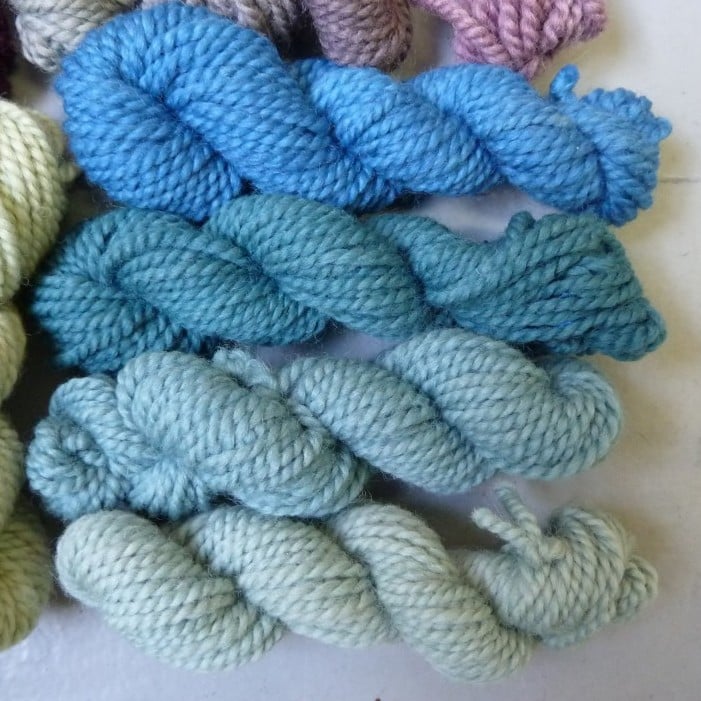This week: Saxon Blue battles Indigo for light and washfastness and tips for getting olive green.
Each week, we are emailed with questions from our natural dye community asking simple and complex questions that we thought might be worth sharing. Here are a handful from this week answered by natural dyer in chief, Kathy Hattori, Founder of Botanical Colors:
How would you evaluate (or even grade!) the light and washfastness of fibers dyed with your Aquarelle Liquid Indigo Dye (Saxon Blue), as compared to the fastness of fibers dyed with the traditional Indigo Vat Dye?
If you don’t have a precise, fastness-test result, would you be so kind as to give me an orientation based on your own observation and experience with both substances?
We have had both dyes tested for light and washfastness and traditional vatted indigo is a better performer. Saxon Blue is indigo that has been converted with a strong acid and although it has an affinity with wool fibers, is not as robust as vatted indigo.
On wool:
Saxon Blue light and washfastness is fair to satisfactory. (3-3.5)
Indigo on wool is superior. (4-5)
On cotton:
Saxon Blue is poor (1-2) and not recommended
Indigo is superior (3-5)
What’s an easy way to get olive green?
It’s hard to believe that yellow and purple make green, but logwood is terrific in a pinch. It’s possible to get an olive shade using a yellow and iron, but sometimes iron spots or makes the shade too gray. We like to use a combination of fustic and logwood, or weld and rich logwood purple. For percentages, start with 3% yellow and add up to 0.5% of the logwood. At first, it doesn’t seem like the color will develop at all, but in a few minutes, you have a beautiful green, like magic!

